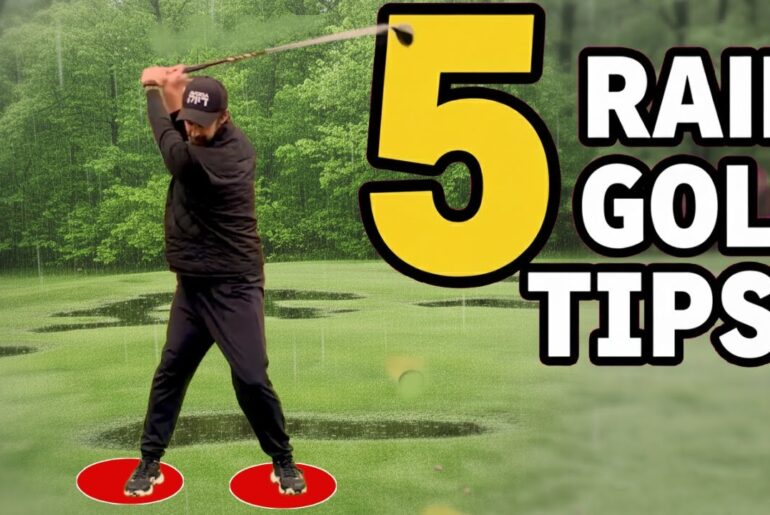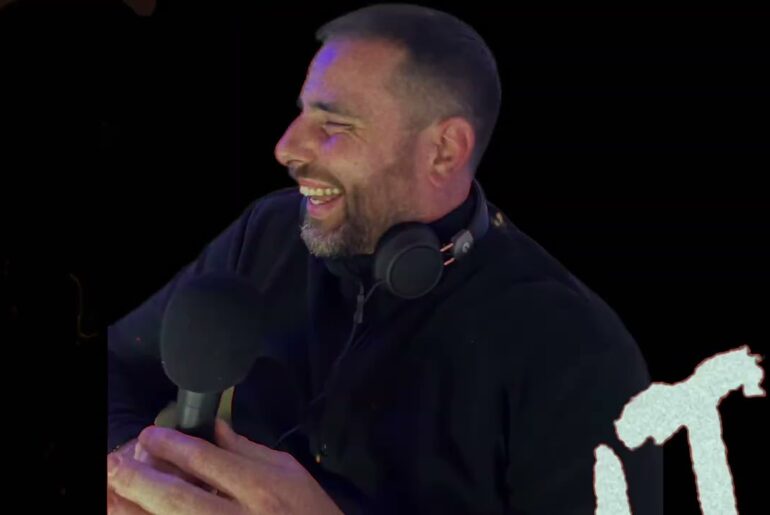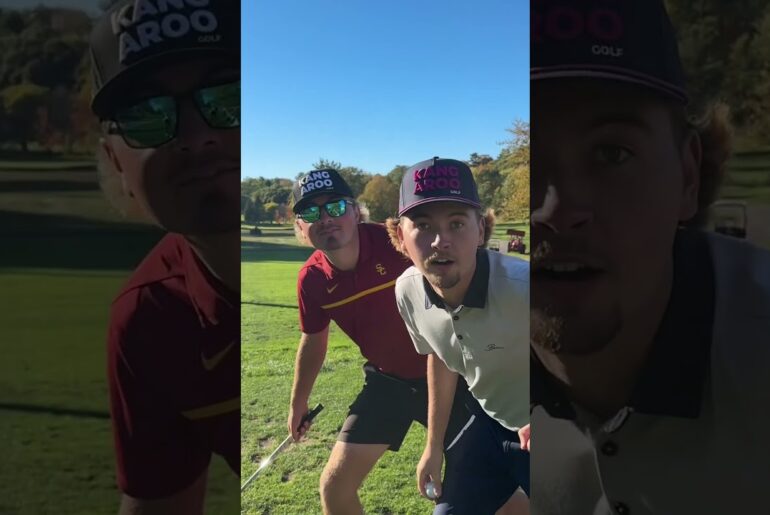An overview of the most commonly applied rules in an average round of golf.
Hi everyone. This presentation will cover the most commonly used rules of golf that are often seen in a typical round. We are New Hampshire Golf and we are the main resource for golf in the Granite State. You can reach out to us in multiple different ways via social media, by email, or by calling the office. The first rule that we’re going to cover today talks about the course and the different areas of the course. It is important to know the area of the course where your ball lies because where it lies can affect the options you have playing your golf ball. There are five defined areas of the course. Starting with the general area. The general area covers the entire course except for the four other areas of the course. Special rules are going to apply specifically to the other four areas of the course and we’ll talk about those now. Starting with the ting area. The ting area is the area the player must use in starting the hole that he or she is playing. The teeing area is just the small rectangle formed by the tea markers and the two club lengths of depth behind them. The rest of the mode area used for teeing outside the yellow rectangle is part of the general area for players playing from this teeing area. All other rectangles on this hole and all of the rectangles on the other holes are part of the general area while the player is playing this hole. The next area of the course that we are going to discuss are the bunkers. A bunker by definition is a specially prepared area of sand which is often a hollow from which turf or soil was removed. These are not part of a bunker. A lip or wall or face at the edge of a prepared area and consisting of soil, grass, stock turf, or artificial materials. Any soil that is inside the edge of a prepared area. Any growing or attached natural object inside the edge of a prepared area such as grass, bushes, or trees. any sand that has spilled over or is outside the edge of the prepared area and all other areas of sand on the course that are not inside the edge of a prepared area such as deserts and other natural sand areas or sometimes referred to as waste areas. The next area of the course that we are going to talk about are the penalty areas. There are two different types of penalty areas distinguished by the color used to mark them. We have red and yellow. Starting with the yellow. Yellow penalty areas are going to be marked with yellow lines or yellow stakes and they give the player two relief options. With the red penalty areas marked with red lines or red stakes, they give the player an extra lateral relief option in addition to the two relief options available for the yellow penalty areas. If the color of the penalty area has not been marked or indicated by the committee, it is treated as a red penalty area automatically. The edge of a penalty area should be defined by stakes, lines, or physical features. When defined by stakes, the edge of the penalty area is defined by the line between the outside points of the stakes at ground level and the stakes themselves are inside of the penalty area. When defined by painted lines on the ground, the edge of the penalty area is the outside edge of the line and the line itself is inside of the penalty area. When physical features are used to define the edge, such as a beach or desert area or a retaining wall, the committee should say how the edge of the penalty area is defined. When the edge of a penalty area is defined by lines or physical features, stakes can be used to show where the penalty area is, but they have no other meaning other than to say the penalty area is here. When the edge of a body of water is not defined by the committee, the edge of that penalty area is defined by its natural boundaries. That is where the ground starts to slope down to form the depression that can hold water. The last defined area of the course we’re going to talk about is the putting green of the hole the player is playing. Note the importance of the hole being played. In play of this hole, all other putting greens on the course, including practice screens, are part of the general area. The special putting green rules and privileges apply only when the player’s ball is on the putting green of the hole the player is playing. The putting green by definition is the area on the hole the player is playing that is specially prepared for putting or the committee has defined as the putting green when temporary greens need to be used. Putting green for a hole contains the hole into which the player tries to play the golf ball. The putting greens for all other holes which the player is not playing at the time are wrong greens in part of the general area. The edge of the putting green is defined by where it can be seen that the specially prepared area starts such as where the grass has been distinctly cut to show the edge unless the committee defines the edge using a different way sometimes using dots or lines. The next rule we’re going to discuss is rule 14.3. Dropping a ball in a relief area. With the dropping procedures, dropping a ball must be done in the right way. To drop the ball in the right way, a player must drop at knee height straight down. So, there’s no throwing, spinning, or rolling of the golf ball. The ball must not hit the player or the player’s equipment before touching the relief area. and the ball must hit inside the relief area. When dropping your ball under the new rules, the likelihood you will need only one drop will increase while the randomness of your resulting lie will be preserved. The procedure is simple. Hold the ball at knee height. Let go of it so it falls straight down and make sure that it lands and comes to rest in the relief area. Don’t throw, roll, or spin the ball. And don’t let it hit you as it falls. When talking about dropping procedures, the wording club length is always used. A club length is measured by a player’s longest club and cannot be the putter. Dropping procedures also will always include a reference point which is the starting point for measuring the relief area and the relief area itself where the ball must be dropped and come to rest. This is a list of the more commonly used reference point. The nearest point of complete relief is used in most free relief procedures, ground under repair, part paths, and temporary water. The point the original ball last cross the edge of a penalty area is used for lateral penalty area relief. Point selected by the player on the reference line is primarily used in back on the line from penalty areas or unplayable balls. The spot where the previous stroke was made is used primarily for stroke and distance relief. The point immediately behind where a ball is embedded isn’t used in getting relief for embedded balls. When it comes to unplayable balls, the reference point is always going to be the spot of the original ball. Relief areas are all going to be measured one club length from the reference point except for lateral relief, which is going to use two club lengths. This is for penalty areas and unplayable balls. The relief area must not be nearer the hole than the reference point. In the 2019 rules, when dropping in taking free relief or penalty relief, your ball must be dropped in the defined relief area and it must come to rest in there too. Most of the time with the knee height dropping procedure, that will happen on your first drop. When it doesn’t, drop a second time. If that drop doesn’t stay within the relief area either, place a ball where your second drop first touched the ground. A player must drop the ball in the right way. When it is not dropped in the right way, player must drop the ball again. The amount of wrongway drops a player gets is unlimited. This means if the ball is not from knee height, it hits the player or the player’s equipment before hitting the ground or does not hit the relief area when dropped. All drops are going to allow the original ball or another ball to be used in free relief and penalty relief. When the 2019 rules let you lift your ball to take relief instead of playing it as it lies, you will be allowed to either use your original ball or substitute and use a different ball. In the 2019 rules, you are allowed to substitute a ball when taking free relief as well as when taking penalty relief. This player is substituting a ball when taking free relief from a cart path. [Music] The nearest point of complete relief is the reference point for taking free relief from an abnormal course condition, a dangerous animal condition, a wrong green, a noplay zone, or in taking relief under certain local rules. It is the estimated point where the ball would lie, that is nearest the ball’s original spot, but not near the hole than that spot. and it’s in the required area of the course where the condition does not interfere with the stroke the player would have made from the original spot if the condition were not there. The nearest point of relief is the spot the shortest distance away from where your ball lies. Either left of, right of, or behind it that isn’t closer to the hole and where if your ball was there, you could make a stroke at it without any interference to your resulting lie, stance, and swing. Estimating this reference point requires the player to identify the choice of club, stance, swing, and line of play that he or she would have used for that stroke. The player does not need to simulate that stroke by taking an actual stance and swinging the chosen club, but it’s recommended that the player normally does this and help making an accurate decision and estimate. The nearest point of complete relief relates solely to the particular condition from which relief is being taken and it may be in a location where there is interference by something else. The nearest point isn’t always the nicest point. In this case, the player’s nearest point of complete relief from this path is under the tree, not to the left of the path in the clear. So, it’s a good idea not to lift your ball before figuring this out because sometimes the best option is to just play the ball as it lies. Rules 15 and 16 are going to cover the different types of free relief you can get out on the golf course. By definition, loose impediments are unattached natural objects. This includes things like stones, loose grass, leaves, branches, sticks, dead animals, and animal waste. Worms, insects, and similar animals that can be easily removed. and the mounds and webs that they build. It is not considered loose and you’re not going to get relief if the object is attached, growing, solidly embedded in the ground, meaning it cannot be easily picked out or sticking on the ball. Some special cases that are not considered loose impediments, sand, loose soil, dew, frost, or water. There is a special case where the player gets to decide. Snow and natural ice other than frost can either be considered a loose impediment or temporary water when on the ground. Spiderwebs are going to be considered loose impediments even though they are attached to another object. Removing list impediments may be removed anywhere on or off the course. in any way. There are two exceptions. No removing loose impediments where a ball must be replaced. This also applies when play is stopped and does not apply on the putting green. The second exception is no deliberately removing loose impediments to affect a ball in motion. If a ball moved when removing a loose impediment, the ball must be replaced. You do get one penalty stroke when the ball is in the general area, the bunker, or a penalty area. There are exceptions where there is no penalty if the ball is moved when removing a loose impediment on the putting green teing area during a surge or other exceptions under rule 9.4. 4B. We will now be going over movable obstructions. We will go over how to remove a movable obstruction. Relief for a ball in or on a movable obstruction. Relief for a ball not found in or on a movable obstruction. When t picking relief for a movable obstruction, the obstruction may be removed. without penalty anywhere on or off the course. There are two exceptions for moving a movable obstruction. Uh T- markers when your ball is in the teeing area may not be removed. And you cannot move a movable obstruction to deliberately affect the ball in motion. If the ball moves when taking relief from a movable obstruction, there is no penalty and you must replace on the original spot where the ball came to rest. If the original spot is not known, estimate the spot and replace on that spot. a ball in or on an obstruction for on the putting green. You may lift the ball and the obstruction. Drop original ball or another ball. When taking relief for a ball in or on an obstruction except for on a putting green, the reference point is the estimated spot under the where the ball was. Your relief area is going to be one club length in the same area of the course as the reference point, not nearer the hole. If you find your ball on a movable obstruction on the putting green, you may lift the ball in the obstruction. Place the original ball or another ball right under the spot where the ball was. The rules of golf are changing in 2023. The back on the line relief procedure has been simplified and here’s what it looks like. So, to use a penalty area as an example, I’m going to keep the point where the ball last crossed between the hole and where I want to drop it. I can go back as far as I want on the line, but I have to drop it on the line because that’s what activates this relief option. If I don’t drop it on the line, I’ll be dropping in a wrong way. The relief area won’t get created, and I’ll have to correct my mistake by dropping it again, but in the right way on the line. But once dropped on the line, the ball can roll up to one club length in any direction, even if it rolls forward and closer to the hole. Back on the line is a great relief option for penalty areas, but you can also use it when you decide that your ball is unplayable.







